This post may contain affiliate links, please see our
privacy
policy for details
This Rustic Gluten-Free Ciabatta Bread is an Italian heartier bread excellent for dipping into olive oil, soups, and stews and is especially tasty with dips. Or, make an Italian-style gluten-free sandwich or garlic bread.
What is Ciabatta bread?
Ciabatta is an Italian bread in the shape of a flatter loaf. The bread is baked with higher hydration, making the crumb holes a little larger. This bread has a unique firmer but light texture, making it a super versatile bread to use for just about anything.
Ciabatta vs Focaccia
Ciabatta and focaccia are the two most consumed bread in Italy. However, ciabatta is the most popular one by far.
The main difference between the two bread is that ciabatta is a flatbread formed into loaves for proofing, and the dough is not as wet as focaccia loaf. However, the dough is much wetter than traditional bread, like the Gluten-Free French Baguette.
egg-free ciabatta bread recipe
Yes, this gluten-free Italian bread is egg-free and made with flour, yeast, water and salt. Since this ciabatta bread is a gluten-free version, I added a splash of olive oil, apple cider vinegar, xanthan gum, and baking soda to give the bread the ciabatta texture.
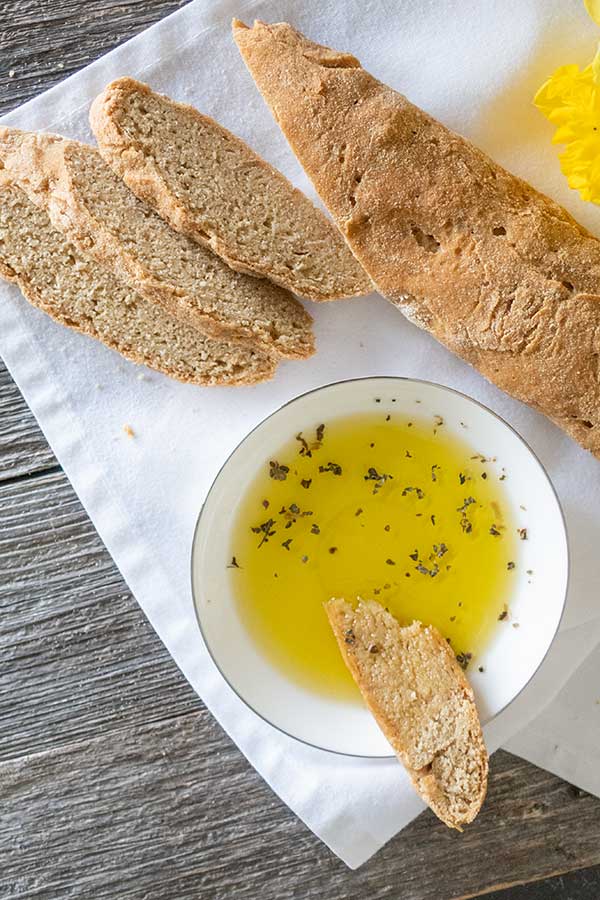
What is the best flour to use in a gluten-free ciabatta recipe?
To get the delicate yet rustic flavour and the right texture of ciabatta bread, the best gluten-free flours to use are a combination of rice flour and one of the following, certified gluten-free oat flour, millet flour, sorghum flour or quinoa flour.
The secondary flour should be a higher protein flour for best results.
Is gluten-free flour blend good for ciabatta bread?
Yes, you can use gluten-free flour blend for ciabatta recipe. However, you will get more of a regular bread flavour and texture. This is because ciabatta needs higher protein flour.
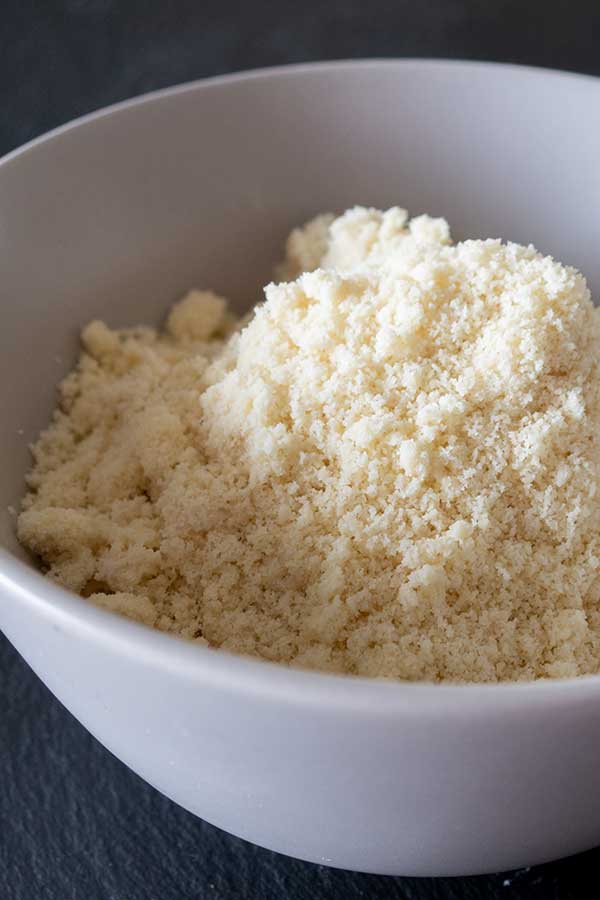
What is high protein flour?
High protein flour typically has 4 grams of protein or higher. The higher protein gluten-free flour gives ciabatta bread a good texture and flavour.
The popular higher protein flours used in gluten-free baking are certified gluten-free oat flour, sweet sorghum flour, millet flour and quinoa flour.
Some other choices of high protein gluten-free flours are buckwheat, amaranth, teff, chickpea, almond, potato and soy flour. However, these flours are very dense, and I would not recommend using them in the gluten-free ciabatta bread recipe.
storing
Once the bread has completely cooled, wrap the bread in foil paper, and it will keep for up to 3 days at room temperature. Do not refrigerate the bread, or it may dry up.
Can you freeze gluten-free ciabatta?
Yes, this gluten-free bread freezes beautifully. But, first, place the ciabatta in the freezer.
Once frozen, wrap the loaves in double layers of plastic wrap followed by foil paper. The bread will keep up to 3 months in the freezer.
How do you heat gluten-free ciabatta?
As with all gluten-free baked goods, they are always best on the same day. When it comes to gluten-free ciabatta bread, the best way to heat it is to wrap the bread in foil paper and bake in a 350 F oven for 12 minutes.
If the bread is frozen, place it first in the refrigerator overnight, then follow the instructions on how to heat ciabatta.
Step-by-step instructions on how to make gluten-free ciabatta bread.
Use a stand mixer fitted with the dough hook, mix the dry with wet ingredients, making sure that you scrape down the sides of the bowl as needed until the dough comes together.
You can also use a rubber spatula for mixing and add some herbs like rosemary. The final dough will be relatively wet, soft and sticky and should pull away from the sides of the bowl.
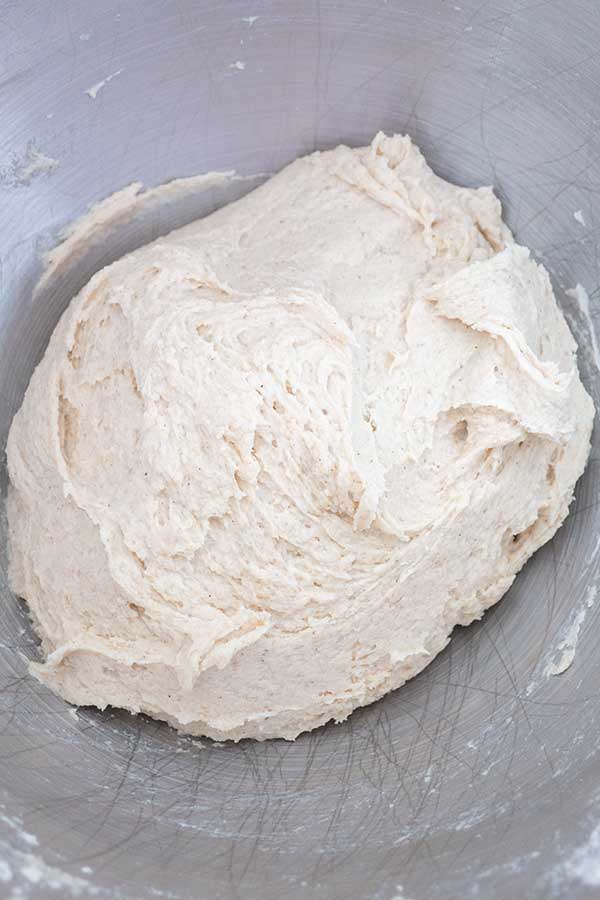
Liberally dust your work surface with flour and let the dough slide out of the bowl onto the floured surface. Using a well-floured dough scraper, carefully manipulate the dough from the sides to form a square or rectangle.
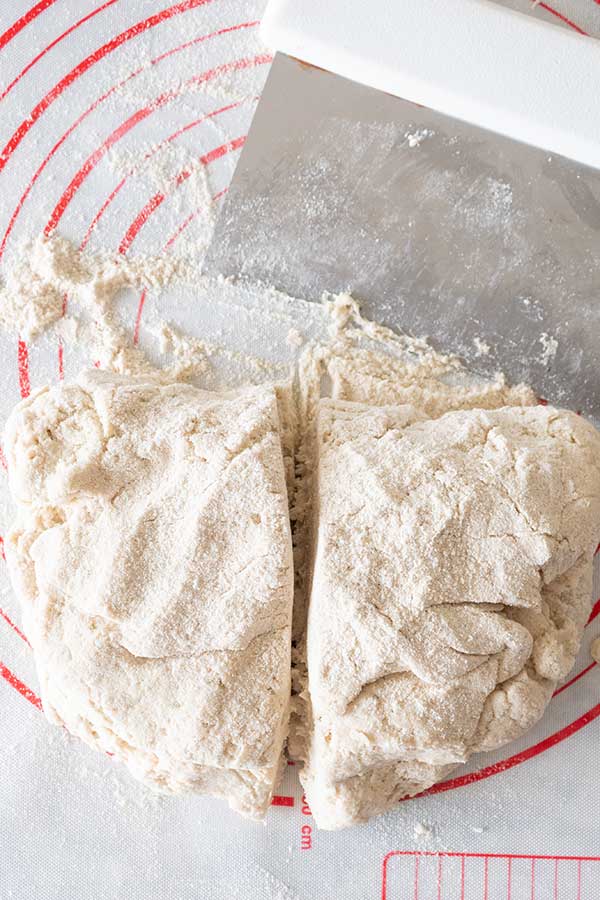
Cut the dough in half, down the middle of the square or rectangle. Gently shape each half into a 10-inch long cylinder using the dough scraper to manipulate the sides and place on a French bread pan.
Let the dough rise for 90 minutes.
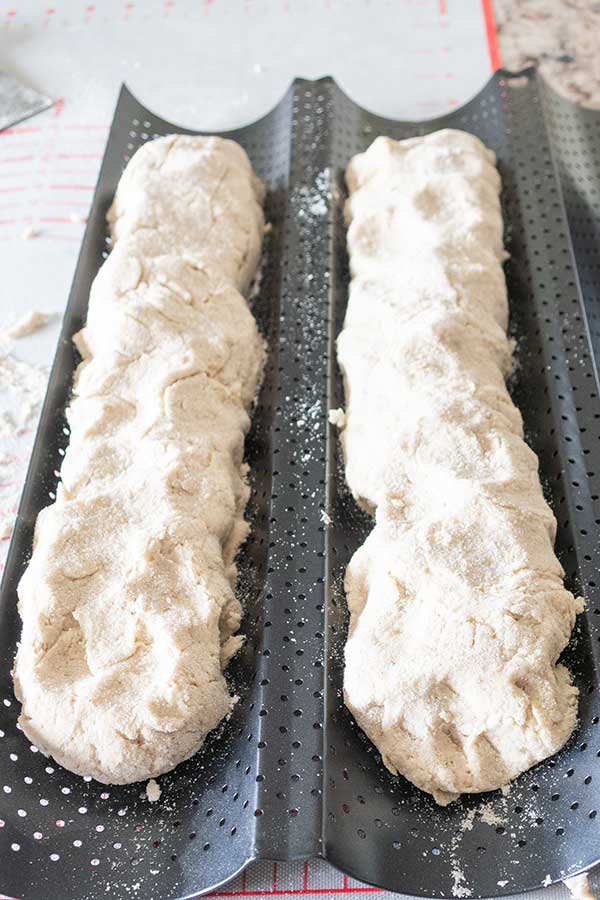
Before you bake the ciabatta, place a large pan filled halfway up with water on the bottom rack in the oven, and preheat the oven to 450 F. This is where the hydration comes from. The steam from the water gives the bread the ciabatta texture.
Before baking, mist each loaf with water or lightly brush with water using a pastry brush.
Place loaves in the oven and bake until the crust is a deep golden brown, about 25-30 minutes. Cool completely on a cooling rack before slicing and serving.
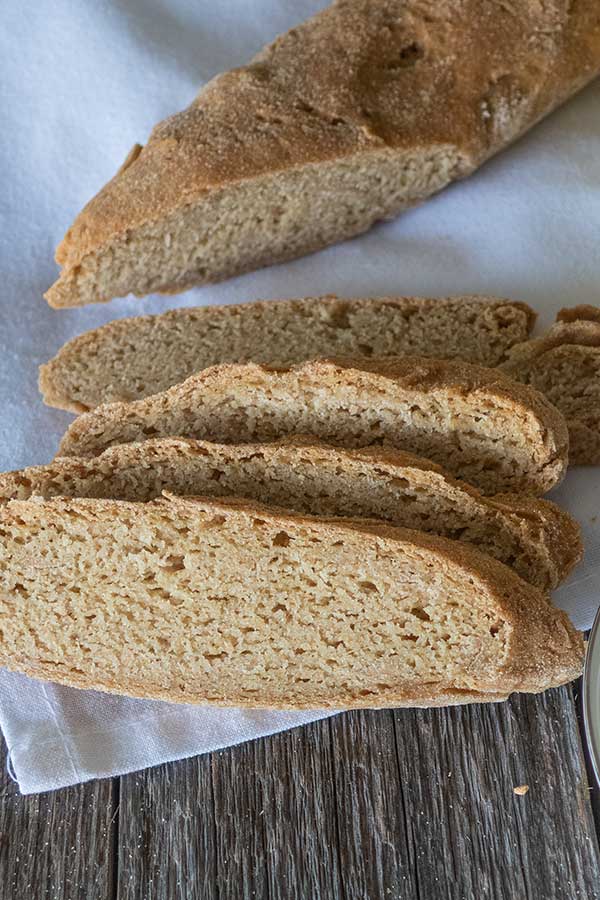
When following the gluten-free diet, gluten-free bread is probably one of the most challenging recipes. This is why it’s essential to measure the ingredients correctly! This means filling the measuring cup with dry ingredients with a spoon and levelling the top off with a knife.
Gluten-free ciabatta dough is wet, sticky and soft. With proper kitchen tools such as a stand mixer with a dough hook, pastry mat, dough scraper and preferably French bread pan, even novice bakers will succeed with ease. Enjoy!
Let’s Connect!
Be sure to FOLLOW US on FACEBOOK and PINTEREST.
Many thanks!
Kristina xx

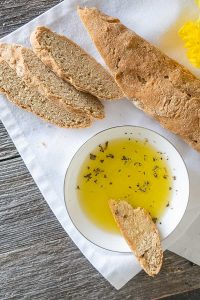






Leave a Reply